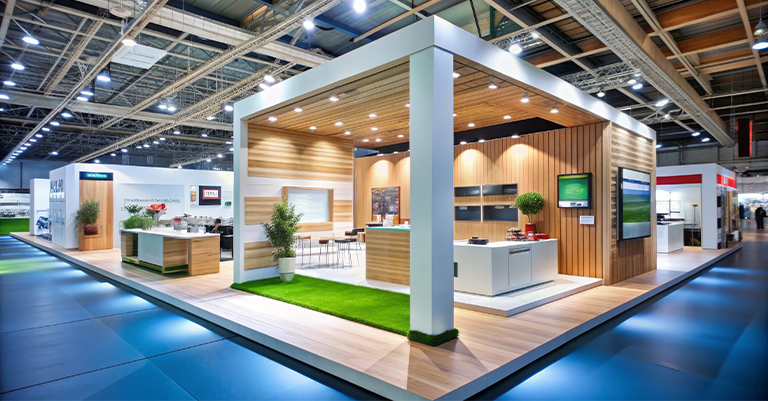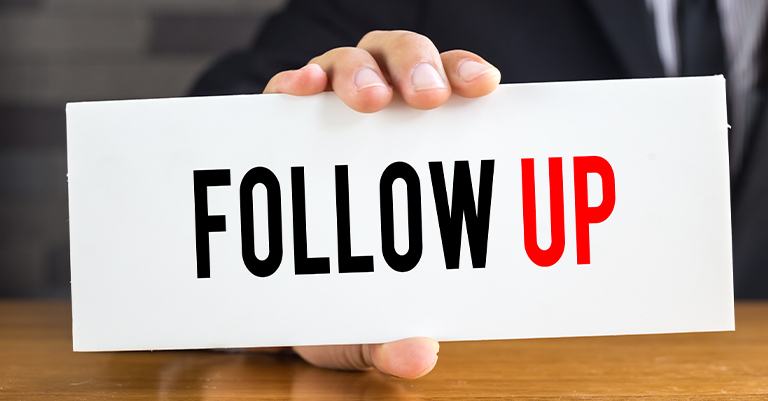Trade Show Booth Tips: Expert Guide to Exhibitor Success
Trade shows are like big shopping malls where businesses show off what they sell, and your booth is your store in that mall. Most trade shows have a sea of displays, so your booth must stand out and make people want to stop and engage with your team. Whether this is your first trade show or you’ve done many before, these trade show booth tips will help you create a booth that people remember and want to visit.
Just like preparing for a big game, success at trade shows comes from good planning and practice. We’ll show you simple ways to make your booth stand out and attract the right visitors.
Planning Before the Show

Setting Goals
Before the show, decide what you want to achieve. Instead of just saying “we want to meet people,” pick specific goals like:
- Getting 50 people to try your product: Set up a welcoming space where people can try out your products themselves. Keep count of who tries it and ask what they think. When people can test things themselves, they’re more likely to buy.
- Meeting 20 store owners: Look up which store owners will be at the show and try to schedule meetings with them. Plan a short talk about why selling your product would make them money and why their customers would want it.
- Taking 100 orders: Make it super easy for people to order right at the show. Offer special show-only discounts and make sure you can process payments quickly. Have products on display and maybe offer deals that end when the show does to encourage people to buy now.
Managing Money
Make a list of everything you’ll need to spend money on:
- Renting your spot: Pick your booth location carefully by checking how many people walk by and how close it is to the main walkways. Corner spots cost more but are easier for people to see. Don’t forget to include extra costs like carpet, power, and insurance.
- Making your booth look good: Save enough money for nice signs, good lighting, and displays that match your brand’s quality. Keep extra supplies handy to fix anything that breaks during the show.
- Travel costs: Add up all the costs for your team’s flights, hotels, food, and getting around the city. Keep some extra money aside for last-minute changes or emergency deliveries that often happen during shows.
- Stuff to give away: Pick free items that people will actually use and that remind them of your business. Remember to include costs for shipping these items and storing them at the show. Have better gifts for serious buyers and simpler ones for regular visitors.
Always save some extra money for surprise expenses – about $100 for every $1,000 you plan to spend.
Picking Your Team
Choose people who will make your booth successful:
- Those who know your products: Pick team members who know your products so well they can answer tough questions without looking things up. They should know both how things work and how people actually use them.
- Friendly people: Choose people who smile naturally, look others in the eye, and are good at talking to new people. They need to stay cheerful even when they’re tired and keep their cool when things get busy.
- People who can stand and talk: Pick team members who won’t get tired from being on their feet all day. They need to stay energetic and excited while standing for hours and chatting with hundreds of people.
- Problem solvers: Choose people who can think on their feet and stay calm when things go wrong. They should be able to fix problems and help upset customers without needing someone to tell them what to do.
Making Your Booth Look Great

Eye-Catching Design
Your booth should grab attention like a cool store window:
- Put your company name where everyone can see it: Place your logo high up – at least as tall as a basketball hoop – so people can see it from everywhere. Use colors that stand out from each other and add lights behind it so it’s easy to spot in the busy show hall.
- Use bright, matching colors: Pick 2-3 main colors that match your company’s look. Make sure to use these same colors on everything – your signs, staff shirts, and displays. Make sure they stand out against the usual gray or black trade show carpet.
- Have clear, easy-to-read signs: Make your signs big enough to read in three seconds from across two parked cars. Use big letters and colors that are easy to see. Instead of listing features, show how your product helps people.
- Use good lighting: Set up bright LED lights to make your products and signs stand out. Add extra lights to make important things pop and create depth. Check how the building’s ceiling lights might affect how your booth looks.
Using Space Wisely
Make your booth space work like a well-organized room:
- Create different areas: Set up separate spaces for showing products, having private talks, and displaying items. Give each staff member enough room (about the size of a small bedroom) to work. Make sure you can see clearly across the whole booth.
- Hide extra supplies: Make storage spaces under tables or behind walls where visitors can’t see them. Keep all boxes, staff belongings, and extra stuff hidden away. A neat booth looks more professional.
- Leave room for walking: Make walkways as wide as a classroom door throughout your booth. Think about how people will move when it’s busy, and leave extra space around popular displays so it doesn’t get too crowded.
- Have a comfortable place: Set up a quiet spot with chairs where you can talk to serious buyers. Put it somewhere away from noisy product demos, but where other people can still see you to feel safe and welcome.
Making it Easy to Walk Through
Set up your booth so people can:
- Move through easily: Make it obvious where people should walk by using patterns on the floor or subtle guides like plants or stands. Don’t create any dead ends, and have several ways to enter and exit the booth so people don’t get stuck.
- See products clearly: Put important products at the height where most people look (about chest to eye level). Make sure visitors can see items from different sides. Arrange products in groups that make sense together, like chapters in a story.
- Find someone to talk to: Spread your team members around the booth where they can help visitors. Make sure they’re easy to spot but aren’t blocking any displays. Think about having them wear matching outfits so visitors know who works there.
- Get to displays: Leave enough room around displays so several people can look at once without bumping into each other. Use clever display tricks like pull-out shelves or spinning stands to show more products without taking up too much space.
Getting People Interested

Fun Activities
Add things that make people want to stop:
- Screens they can touch and use: Set up tablets or touchscreens where people can play with your product or try fun games. Keep it simple with clear directions and quick rewards – think arcade game style but about your product.
- Games related to your product: Create fun challenges or quizzes that teach people about what you sell while they play. Give small prizes to everyone who tries. Keep games shorter than a TV commercial (about 3 minutes) so others don’t have to wait long.
- Live demonstrations: Show your product in action several times a day, like a cooking show. Keep it short and let people from the crowd help out. Tell real stories about how people use your product to solve problems.
- Contests or challenges: Run fun competitions every hour that let people try your products. Make it something people want to take pictures of and share online. Keep the rules simple (like a carnival game) and give out prizes worth winning.
Remember 90% of what they do, but only 10% of what they read. That’s why hands-on activities work so well!
Showing Off Products
When showing your products:
- Solve problems people have: Start by talking about everyday problems your visitors face. Then show how your product fixes those problems. Use examples that feel real to them, like showing how a knife cuts through bread instead of just saying it’s sharp.
- Point out special features: Focus on showing 2-3 main things that make your product special. Don’t overwhelm people with every little detail. Compare it to things they already know – like saying your new phone case is as strong as a bike helmet.
- Let visitors try things: Set up safe ways for people to test your product themselves. Give them simple tasks that show why your product is great. Keep hand sanitizer and cleaning supplies nearby, like at a makeup counter.
- Keep demonstrations short: Make your product demos quick – about the length of a song. Focus on the cool features people care about most. End by telling them exactly what to do next if they’re interested, like where to place an order.
Collecting Visitor Info
Make it easy to get visitor information:
- Simple sign-up forms: Make digital forms as easy as ordering a pizza online – just 4-5 quick questions. Make it worth their time by offering something in return, like a chance to win a prize or useful tips they can download.
- Scan business cards: Use apps that can quickly take pictures of business cards and save the info automatically. Always have a backup plan, like a simple paper form. During quiet times, sort the cards like sorting baseball cards – by who’s most likely to buy.
- Quick survey questions: Ask 2-3 questions that help you know if someone’s really interested. Make it multiple choice, like a quick quiz. Train your team to get this info naturally while chatting, not like a robot reading questions.
- Fun ways to collect info: Make sharing contact info feel like a game. Use things like digital prize wheels or social media photo contests where people want to give you their info. Think of it like trading contact info for something fun or valuable.
These engagement strategies help create memorable booth experiences while gathering valuable visitor information. Remember to balance fun with professionalism – you want to attract attention but maintain credibility.
Working the Booth

Being Professional
- Stand up straight and look ready: Keep good posture, like you’re about to meet your favorite celebrity. Stand near the booth entrance with your hands free – not in pockets or crossed. Let your body language show you’re excited to help, like a favorite teacher ready to start class.
- Keep phones away: Put phones in a safe place in the booth, like you would during an important test. Only use them during break time. Pick one team member to be the official photographer and social media person for the booth.
- Keep the booth clean: Give each person their own area to keep tidy, like assigned seats in a classroom. Make a schedule for cleaning things people touch often. Keep cleaning supplies nearby but hidden, like under a table.
- Smile and welcome visitors: Greet everyone who comes to your booth, like welcoming guests to your home. Practice friendly ways to say hello that don’t sound pushy or fake. Learn to read people’s body language to tell if they want to talk more or just look around.
Engaging with Visitors
- Ask good questions: Start conversations with 3-4 friendly questions that help you understand what visitors need. Begin with big-picture questions (like “What brings you to the show today?”) before getting into details. Remember to listen more than you talk – like having a conversation with a new friend.
- Listen carefully: Pay attention to important things visitors tell you, like a detective looking for clues. Watch their face and body language to see if they’re interested or concerned. Repeat key things they say to make sure you understood correctly, like checking directions.
- Explain things simply: Use everyday words unless visitors start using technical terms first. Explain complicated things using comparisons – like saying your software works like a traffic light controlling data flow. Break down complex ideas into bite-sized pieces.
- Handle tough questions: Be ready for common challenging questions, like a student prepared for a pop quiz. Stay positive when dealing with problems. Know when to get help from tech experts or managers – like calling in a specialist when you need extra help.
Taking Breaks
- Switch people out regularly: Have staff work in the booth for 45 minutes, then take a 15-minute break – like switching players during a basketball game. Make a clear schedule showing who’s in the booth when. Put the schedule where everyone can see it, like a team roster.
- Make sure everyone rests: Set up a quiet break area away from the noise, like having a locker room for athletes. Keep healthy snacks and water there. Make sure everyone takes their breaks on time – tired staff can’t do their best work, just like tired players can’t play their best game.
- Have extra help during rush: Know which times will be busiest (like a restaurant during lunch rush) and schedule more people then. Have backup players ready to jump in if it gets unexpectedly busy. Train everyone to help with different jobs, like a utility player in baseball.
- Give clear jobs: Tell each person exactly what they should do during their shift, like players knowing their positions on a sports team. Create a smooth way to hand off tasks between shifts, like runners in a relay race. Have one person be the shift captain to keep everything running smoothly.
These guidelines help maintain professional standards while keeping your team fresh and effective throughout the show.
Using Technology

Cool Displays
- Show moving pictures and videos: Create short videos that play over and over without sound, like a TV in a store window. Use high-quality videos that look good even when people are far away. Add captions for the important parts, like subtitles in a movie.
- Display social media posts: Set up a screen showing approved posts from the event and happy customer reviews, like a highlight reel. Update it throughout the day to keep it fresh. Make it clear how visitors can add their own posts to the display.
- Create interactive presentations: Make touchscreen displays that visitors can use on their own, like using a giant iPad. Organize the information into clear groups, like chapters in a book. When no one’s using it, have it show eye-catching animations, like an arcade game attract mode.
- Share customer stories: Show real examples of how people use your products successfully, like before-and-after pictures. Add new stories from people at the show each day. Include QR codes (those square barcodes) that people can scan with their phones to learn more.
Visitor Tracking
- Use simple apps to scan: Choose scanning apps that work without wifi (like offline games) and save information automatically. Show your team quick ways to scan badges, like taking a selfie. Always have a backup plan, like keeping paper forms handy, in case technology fails.
- Connect visitor info: Make your scanning system automatically send visitor information to your contact list, like syncing your phone contacts. Create simple groups to sort visitors (like “ready to buy” or “just looking”). Add quick notes about what each person wants, like taking orders at a restaurant.
- Mark down who’s interested: Create an easy 1-2-3 rating system for tracking potential customers. Think of it like rating movies with stars. Have staff add short notes about what products people liked. Flag the most interested visitors for quick follow-up, like marking urgent emails with a star.
- Set up automatic emails: Write friendly follow-up messages that change based on what visitors were interested in. Schedule them to send the next day, like setting a reminder on your phone. Include specific things you talked about, like mentioning someone’s favorite flavor after they try your ice cream.
Social Media
- Create special hashtags: Make a short, catchy phrase people can use when posting about your booth – like creating a team slogan. Put this hashtag everywhere in your booth so it’s easy to see. Make it simple enough that people won’t misspell it.
- Share live videos: Do quick live broadcasts when showing cool things at your booth, like a news reporter doing a live update. Keep these videos shorter than a music video (under 5 minutes). Talk with online viewers while still paying attention to booth visitors, like hosting a mini TV show.
- Post updates throughout: Share pictures and stories about what’s happening at your booth every few hours, like updating a friend about your day. Show off when visitors do cool things with your products. Mix up your posts with photos, videos, and regular updates to keep things interesting.
- Ask visitors to share: Create spots in your booth that make great photo backgrounds, like those fun photo walls at theme parks. Give people a small reward for sharing posts about your booth. Make it super easy to find you online by using QR codes – those square barcodes you can scan with your phone.
These technology strategies help extend your booth’s impact beyond the show floor. Remember to have backup plans for technical issues and keep all systems fully charged and updated.
After the Show

Following Up
- Make a list of who to contact: Sort your new contacts like organizing baseball cards within a day after the show. Put the most interested people at the top of your list. Write down specific things you talked about – like how a sports scout takes notes about players they want to recruit.
- Send follow-up messages quickly: Write personal emails that mention your actual conversation, like thanking someone for coming to your party and referencing the fun things you talked about. Send these within two days while people still remember meeting you.
- Keep track of who responds: Set up a simple system to watch who replies, like keeping score in a game. Make notes about when people prefer to be contacted and how (email, phone, etc.). Set reminders to try again if you don’t hear back, like following up on a job application.
- Remember what each person wanted: Write down the specific things each visitor was interested in, like a waiter remembering everyone’s order at a restaurant. Note which products they liked and how soon they might buy. Keep track of any time-sensitive deals they want.
Checking Results
- Count how many people: Add up your leads like counting test scores – see how many you got compared to your goals. Break them into groups (like sorting candy by type) based on what they were interested in and how likely they are to buy. Figure out how much you spent to get each lead, like calculating the cost per pizza slice.
- Track new customers: Keep count of how many booth visitors actually become customers, like tracking how many seeds grow into plants. Watch how long it takes people to go from interested visitor to actual customer. Compare this to other ways you get customers, like comparing different fishing spots.
- Add up all costs: Calculate everything you spent, including stuff you might forget (like overtime pay or broken items), like making sure you count every penny spent on a vacation. See if you stayed within budget. Make notes about where things cost more than expected.
- Compare show performance: Look at how this show worked compared to past shows, like comparing game scores. Figure out which parts of your booth worked best, like testing different recipes to find the favorite. Write down ideas for making the next show even better.
Planning Ahead
- Write down what worked: Make notes about your booth’s best parts while they’re fresh in your mind, like writing a movie review right after watching it. Ask your team what demonstrations got the best reactions. Keep track of positive comments from visitors, like saving good reviews.
- List things to change: Note any problems with how people moved through your booth, like spotting traffic jams on a road. Write down which products got the most attention. Keep a list of technical problems that need fixing, like making a repair list for your house.
- Think about improvements: Collect ideas for making your booth better based on what visitors said, like getting feedback on a recipe. Consider adding new technology that could make things more interesting, like upgrading your phone to get better features. Plan how to make your booth work smoother.
- Update training plans: Create better ways to teach your team based on what you learned, like updating the rules of a game after playing it. Write new scripts for showing products that worked well. Make better systems for running your booth, like creating a more efficient morning routine.
These post-show activities help maximize your return on investment and improve future performance. The key is acting quickly while information is fresh and maintaining detailed records for future reference.
Conclusion
Running a great trade show booth is like putting on a successful performance – it takes planning, practice, and the right tools. These tips will help you create a booth that people want to visit and remember.
Start by picking one or two things to improve first. As you get better at those, add more improvements. With each show, you’ll learn what works best for your team and your products. Remember: You don’t have to be perfect, just better than last time. Use these tips as your guide, and you’ll see better results at each trade show you attend.




